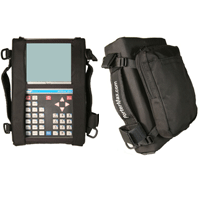VIBRATION ANALYSIS
Vibration Analysis (VA), applied in an industrial or maintenance environment aims to reduce maintenance costs and equipment downtime by detecting equipment faults. VA is a key component of a Condition Monitoring (CM) program, and is often referred to as Predictive Maintenance (PdM).
Vibration analysis - An overview
Vibration analysis consists in listening inside the machine. Each component vibrates differently and generates a characteristic noise that leaves a typical fingerprint in the spectrum in the form of a linear pattern. If damage is present, the pattern stands out from the noise floor. This allows the specialist to recognize, for example, whether the problem comes from unbalance, misalignment or bearing damage. In addition to an accurate diagnosis it is generally also possible to determine whether urgent action is necessary or whether it can wait until the next scheduled servicing.
Vibration analysis - The benefits
The bottom line is that vibration analysis benefits both the operation and the maintenance team:
-
Enables the identification of machine faults
-
Provides information on root causes
-
Localizes the affected components
-
Optimizes spare parts logistics
-
Allows early planning of maintenance measures.
Methods and signal forms in vibration analysis
-
FFT analysis: often used for detecting the most common machine faults, such as misalignment or unbalance.
-
Order analysis: Variant of FFT analysis used for machines with variable RPM; instead of the frequency, the multiple of the rotational speed (order) is analyzed in the spectrum;
-
Envelope analysis: used for diagnosis of damaged gear toothing and roller bearings.
-
Cepstrum: facilitates the diagnosis of gear and bearing damage.
-
Time waveform: suitable for analysis of the measured signal and for detecting beats and transients (random pulses).
-
Orbit: used for analysis of shaft vibrations – especially in shafts with sleeve bearings.
-
Phase measurement: used together with the FFT analysis to differentiate machine faults, such as unbalance, misalignment or loose parts.
-
Resonance analyses: for identification of natural frequencies and natural vibrations in a machine or structure. Methods include impact tests, recording of the run-up and coast-down curve and measurement of the shaft bending lines.



